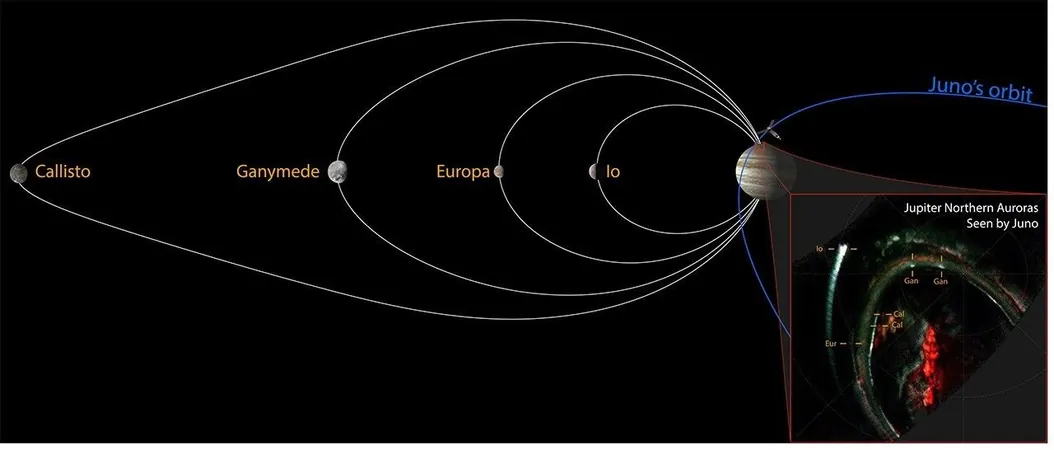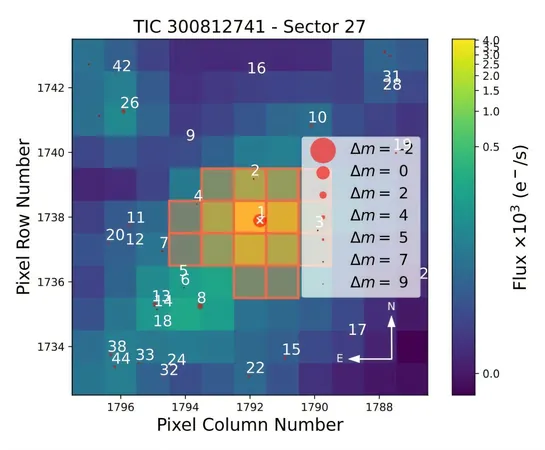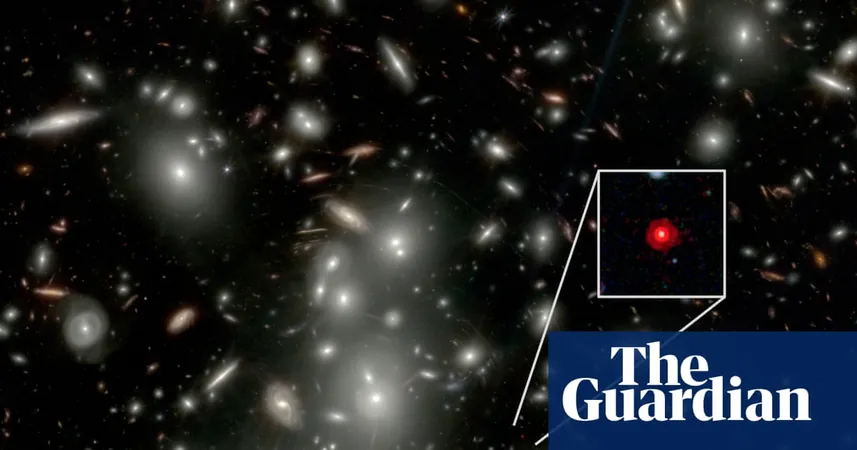
Juno Unveils the Last Piece of Jupiter's Auroral Puzzle: Callisto's Footprint Revealed!
2025-09-03
Author: Charlotte
Jupiter's Dazzling Auroras: A Cosmic Light Show
Jupiter is home to the most brilliant and awe-inspiring auroras in our solar system, shimmering near its poles with captivating colors that provide insight into the dynamic interactions between the giant planet, its moons, and the solar wind.
Unlike our own familiar northern lights, the largest moons of Jupiter generate their own unique auroral signatures, known as "satellite footprints." These signatures offer a fascinating glimpse into how each moon engages with its local space environment—something our moon does not do.
The Elusive Mystery of Callisto
While NASA's Juno mission shed light on three of Jupiter's Galilean moons—Io, Europa, and Ganymede—Callisto, the most distant of them all, remained an enigma. Previous attempts using the Hubble Space Telescope were stymied by Callisto's faintness and its position often obscured by the brighter main auroral oval.
A Breakthrough Discovery During Juno's 22nd Orbit
Launched in 2016, Juno has been orbiting Jupiter, providing unprecedented views of this gas giant's polar auroras. In an exciting twist of fate during its 22nd orbit in September 2019, Juno witnessed a rare cosmic alignment. In this instance, the main auroral oval shifted, allowing for the imaging of Callisto's elusive signature.
This serendipitous event not only confirmed the existence of Callisto's auroral footprint but also provided valuable data on the particles, electromagnetic waves, and magnetic fields interplaying in this cosmic drama.
Jupiter's Magnetosphere: A Cosmic Playground
Jupiter's magnetic field stretches far beyond its moons, creating a massive magnetosphere that is constantly influenced by solar winds emanating from our sun. Just like Earth's solar storms can push northern lights southward, Jupiter's auroras are similarly impacted by solar activity.
Completing the Family Portrait of Galilean Moons
In September 2019, a significant solar stream struck Jupiter, causing the auroral oval to shift toward the planet’s equator. This brief alteration unveiled Callisto's faint yet distinct auroral signature, confirming that all four Galilean moons leave their marks within Jupiter's atmosphere. With Callisto now included, the family portrait of these remarkable moons’ auroral signatures is finally complete!









 Brasil (PT)
Brasil (PT)
 Canada (EN)
Canada (EN)
 Chile (ES)
Chile (ES)
 Česko (CS)
Česko (CS)
 대한민국 (KO)
대한민국 (KO)
 España (ES)
España (ES)
 France (FR)
France (FR)
 Hong Kong (EN)
Hong Kong (EN)
 Italia (IT)
Italia (IT)
 日本 (JA)
日本 (JA)
 Magyarország (HU)
Magyarország (HU)
 Norge (NO)
Norge (NO)
 Polska (PL)
Polska (PL)
 Schweiz (DE)
Schweiz (DE)
 Singapore (EN)
Singapore (EN)
 Sverige (SV)
Sverige (SV)
 Suomi (FI)
Suomi (FI)
 Türkiye (TR)
Türkiye (TR)
 الإمارات العربية المتحدة (AR)
الإمارات العربية المتحدة (AR)